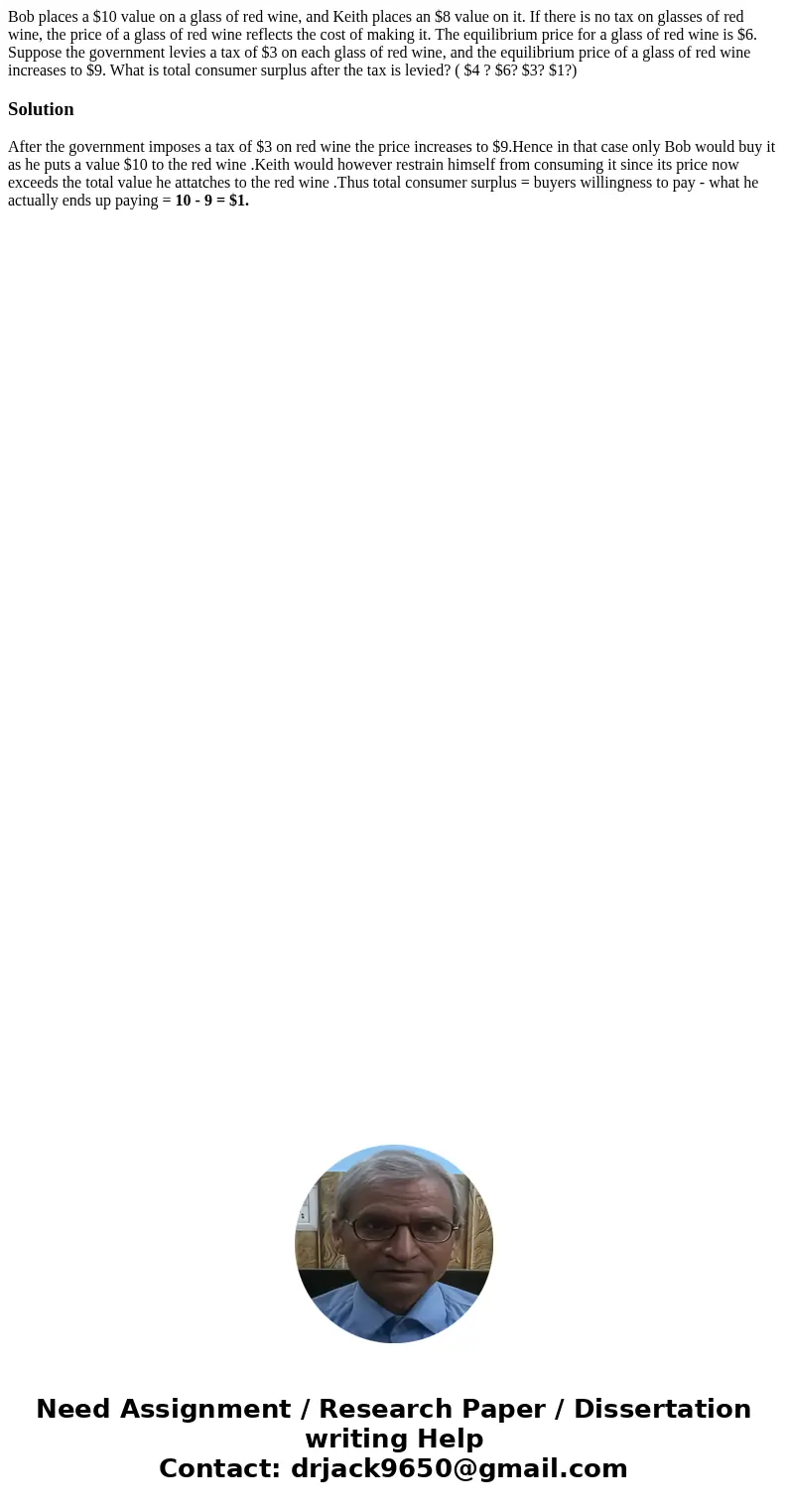Bob places a 10 value on a glass of red wine and Keith place
Bob places a $10 value on a glass of red wine, and Keith places an $8 value on it. If there is no tax on glasses of red wine, the price of a glass of red wine reflects the cost of making it. The equilibrium price for a glass of red wine is $6. Suppose the government levies a tax of $3 on each glass of red wine, and the equilibrium price of a glass of red wine increases to $9. What is total consumer surplus after the tax is levied? ( $4 ? $6? $3? $1?)
Solution
After the government imposes a tax of $3 on red wine the price increases to $9.Hence in that case only Bob would buy it as he puts a value $10 to the red wine .Keith would however restrain himself from consuming it since its price now exceeds the total value he attatches to the red wine .Thus total consumer surplus = buyers willingness to pay - what he actually ends up paying = 10 - 9 = $1.

 Homework Sourse
Homework Sourse